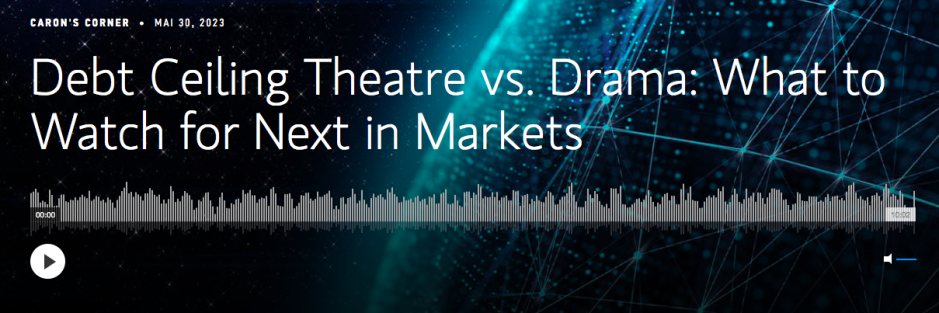
Morgan Stanley IM: Debt Ceiling Theatre vs. Drama: What to Watch for Next in Markets
Morgan Stanley IM: Debt Ceiling Theatre vs. Drama: What to Watch for Next in Markets
Podcast
Jim Caron, Co-Lead Global Portfolio Manager and Co-Chief Investment Officer, Global Balanced Risk Control Team, shares his macro thematic views on key market drivers.
01.06.2023 | 07:05 Uhr
- Sad to say, but the debt ceiling debate, and ‘risk-event’, is all too frequent an occurrence for markets. While much focus is placed on issues leading up to the ‘event’, the real market impact is often what happens after.
- This question has been consuming the narrative in some parts of the market that implies there is impending ‘liquidity risk’ to the markets post debt ceiling. SPOILER ALERT: We don’t see it that way.
- But, while ‘liquidity’ could be a risk, it’s not our base case. Perhaps one can take feeble consolation in that there are other things to worry about.
- Post-debt ceiling theatre, consumer strength is where the real longer term risk lies, what I termed the drama, or perhaps trauma. Inflation, earnings and profit margins and ultimately/possibly asset prices may take notice.
- The point here is that although market uncertainties still exist, we are not devoid of well valued investment opportunities. As we like to say, being balanced is better than being defensive. Fat tails exists on both sides of the distribution of outcomes, why not incorporate both instead of just picking one.
See below for important disclosures.





Diesen Beitrag teilen: